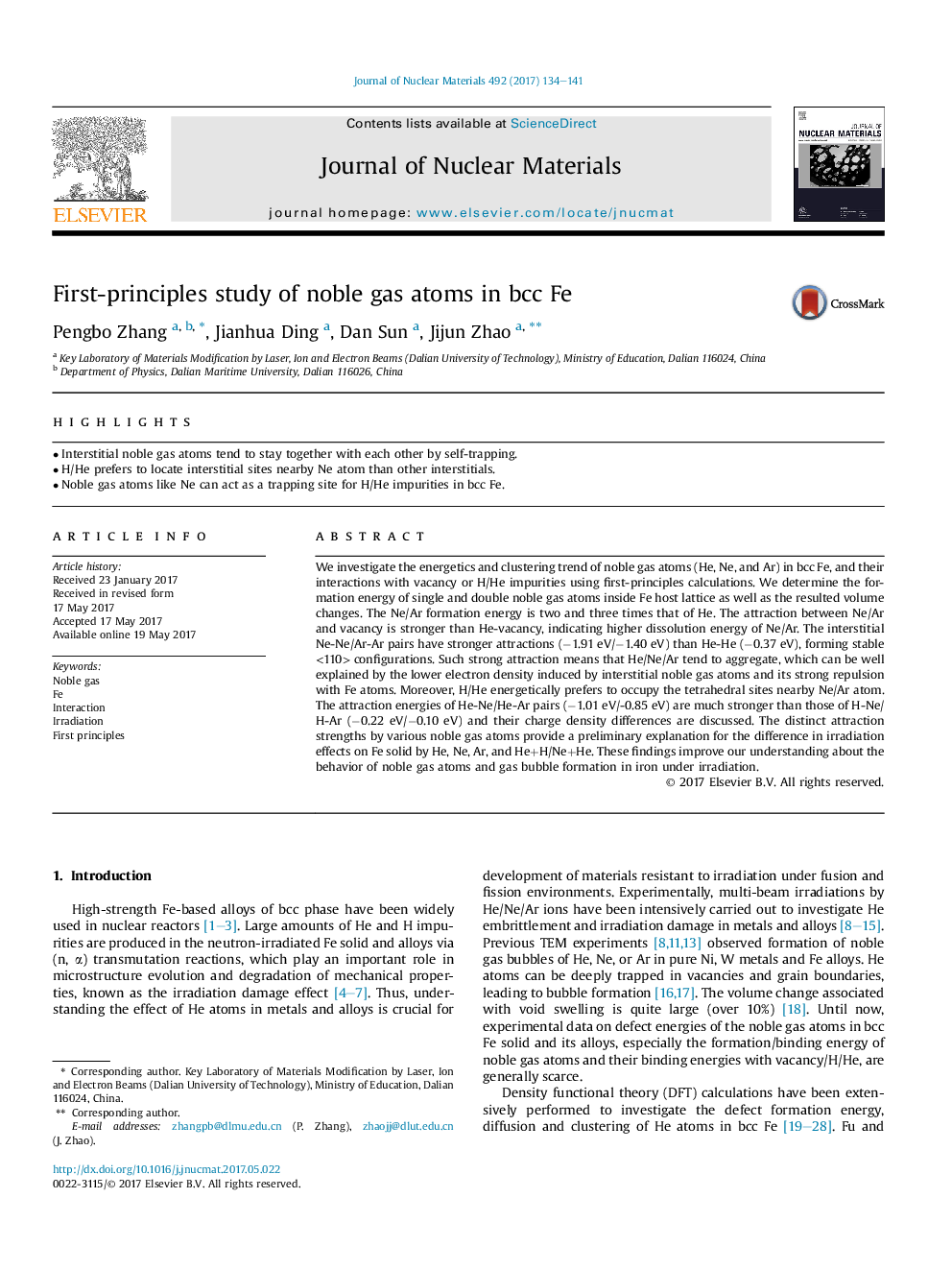| Article ID | Journal | Published Year | Pages | File Type |
|---|---|---|---|---|
| 5453921 | Journal of Nuclear Materials | 2017 | 8 Pages |
Abstract
We investigate the energetics and clustering trend of noble gas atoms (He, Ne, and Ar) in bcc Fe, and their interactions with vacancy or H/He impurities using first-principles calculations. We determine the formation energy of single and double noble gas atoms inside Fe host lattice as well as the resulted volume changes. The Ne/Ar formation energy is two and three times that of He. The attraction between Ne/Ar and vacancy is stronger than He-vacancy, indicating higher dissolution energy of Ne/Ar. The interstitial Ne-Ne/Ar-Ar pairs have stronger attractions (â1.91 eV/â1.40 eV) than He-He (â0.37Â eV), forming stable <110> configurations. Such strong attraction means that He/Ne/Ar tend to aggregate, which can be well explained by the lower electron density induced by interstitial noble gas atoms and its strong repulsion with Fe atoms. Moreover, H/He energetically prefers to occupy the tetrahedral sites nearby Ne/Ar atom. The attraction energies of He-Ne/He-Ar pairs (â1.01Â eV/-0.85 eV) are much stronger than those of H-Ne/H-Ar (â0.22Â eV/â0.10 eV) and their charge density differences are discussed. The distinct attraction strengths by various noble gas atoms provide a preliminary explanation for the difference in irradiation effects on Fe solid by He, Ne, Ar, and He+H/Ne+He. These findings improve our understanding about the behavior of noble gas atoms and gas bubble formation in iron under irradiation.
Related Topics
Physical Sciences and Engineering
Energy
Nuclear Energy and Engineering
Authors
Pengbo Zhang, Jianhua Ding, Dan Sun, Jijun Zhao,
